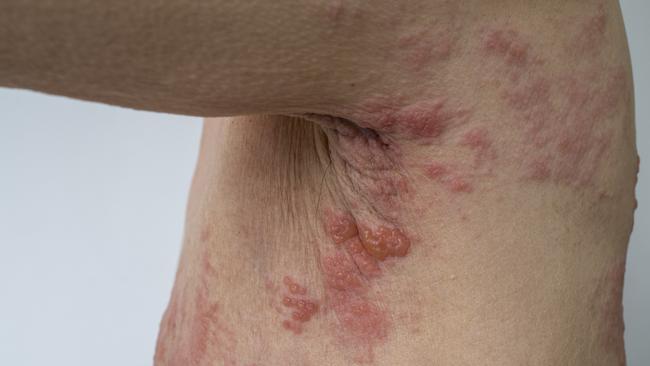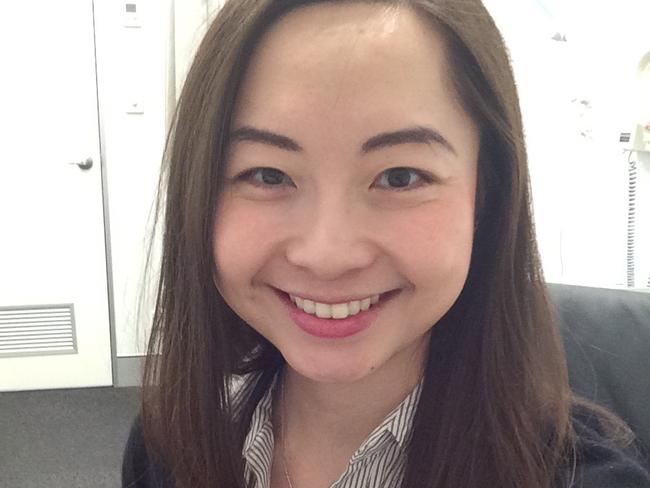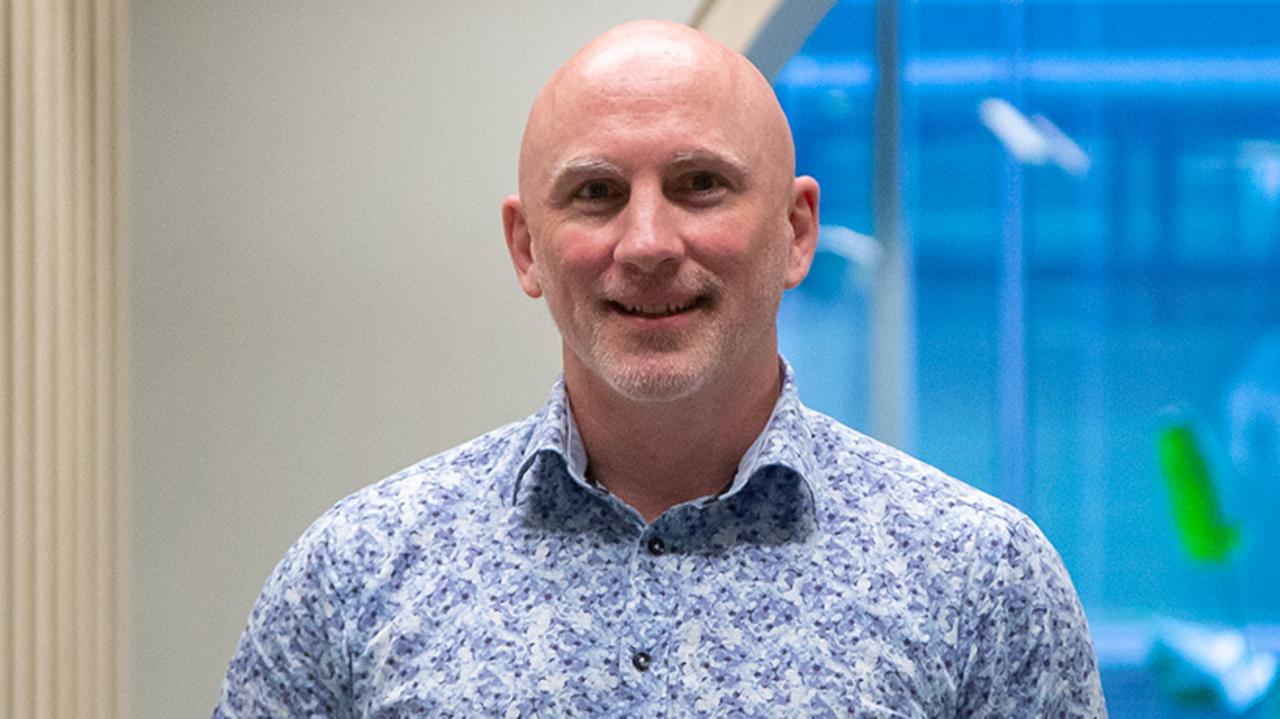Dr Jana Pittman reveals hidden pain of shingles which has struck in her family
When Olympian-turned-medico Jana Pittman heard her mother describe her pain and a rash, she knew exactly what it was.

SmartDaily
Don't miss out on the headlines from SmartDaily. Followed categories will be added to My News.
When Jackie Pittman felt waves of pain stretching from her right armpit across her chest in October last year, she feared she was having a heart attack. But the 72-year-old also had a rash which had broken out a few days prior.
“I thought the rash was a reaction to food we’d eaten out and figured it would go away after a couple of days,” she says.
“But it got worse and started to blister, with the right side of my body becoming painful and sensitive to touch.”
Jackie called her daughter, the Olympic hurdler-turned-doctor Jana Pittman, who told her the symptoms were “textbook” for shingles.
Also called herpes zoster, shingles is a viral infection that produces 120,000 new cases a year in Australia, and a reactivation of the varicella-zoster virus – the same virus that causes chickenpox.
Shingles will typically produce a painful rash with blisters on one side of the body or face that can last from two to four weeks, and 48 to 72 hours before it appears some people experience pain, itching, tingling, or numbness.

After a person gets chickenpox or is exposed to the varicella-zoster virus, the virus usually “sleeps” in the body without causing problems.
“As we age our immune system starts to decline, however, and this can lead to the reactivation of the virus causing shingles,” GP Dr Sarah Chu says.
“Up to one in three Australians risk developing shingles in their lifetime, and up to 99.5 per cent of adults aged 50 years and over carry the virus that can cause it.”
A recent survey of 300 Australians aged 50-79, commissioned by GSK Australia, revealed many people are ill-informed about the condition, including its long-term consequences.
One of the most common is postherpetic neuralgia – nerve pain which can persist for months or years and affects up to 25 per cent of people with shingles.
“It’s also serious if the rash forms around the eyes, as it can potentially threaten your vision,” Chu says.
TREATMENTS
There is no cure for shingles, but antiviral medicines can relieve symptoms and prevent complications if started within three days of the rash appearing.
When it comes to prevention, however, there are two vaccination options.

Zostavax is a live-virus vaccine administered in a single dose and registered for use for people aged 50 and over.
It’s been free for people aged 70-79 under the National Immunisation Program since 2016, but after October 2023 you’ll pay between $200 and $230 per dose.
The other option is Shingrix, a non-live vaccine administered in two doses, two-to-six months apart.
It’s also registered for use by people aged 50 and over, but also by younger people who are immunocompromised. But it’s only available by private prescription and costs $250 to $300 per dose.
In April 2022, a statement from the Australian Technical Advisory Group on Immunisation (ATAGI) said that for people aged 50 years and above, Shingrix is the preferred vaccine due to its higher efficacy.
NOT CONTAGIOUS
Shingles isn’t contagious but if a person who has never had, or isn’t protected against chickenpox comes into direct contact with the blisters they may develop chickenpox. Additionally, a US study, with results published in the journal Open Forum Infectious Diseases in July, established a link between a higher risk of developing shingles if you’re over 50 and have had Covid.

STILL SUFFERING
Jana Pittman’s mum Jackie, 73, says the pain from shingles felt like “terrible sunburn”, she suffered from headaches, and felt so exhausted some days she couldn’t get out of bed.
A year on, she still has issues, possibly because she wasn’t vaccinated or able to take antiviral medication.
“I’m one of the unlucky ones with postherpetic neuralgia,” she says.
“The tingling itch and pain come back at times.”
Pittman says it was hard to see her mum so sick with shingles and says it’s important not to “self-diagnose” the virus.
“See a GP, as shingles is a health condition that must be taken very seriously,” she says.
For more information, visit GSK Australia Know Shingles at knowshingles.com.au
HOW TO EASE THE PAIN
● Keep the rash dry, clean and covered.
● Avoid scratching as it may cause infection.
● Don’t share towels.
● Wear loose cotton clothes.
● Cool compresses/ice packs may help with discomfort but don’t apply them directly to the skin.
● Don’t apply creams or gels to open blisters.
● Avoid contact with anyone at risk.
Source: Dr Jana Pittman
Originally published as Dr Jana Pittman reveals hidden pain of shingles which has struck in her family




